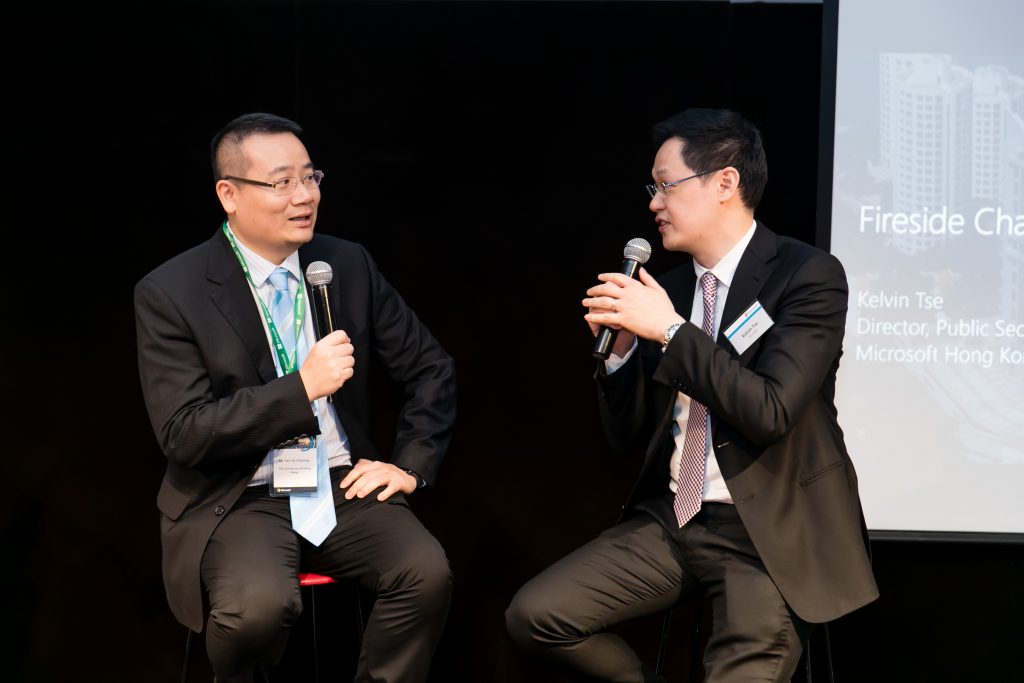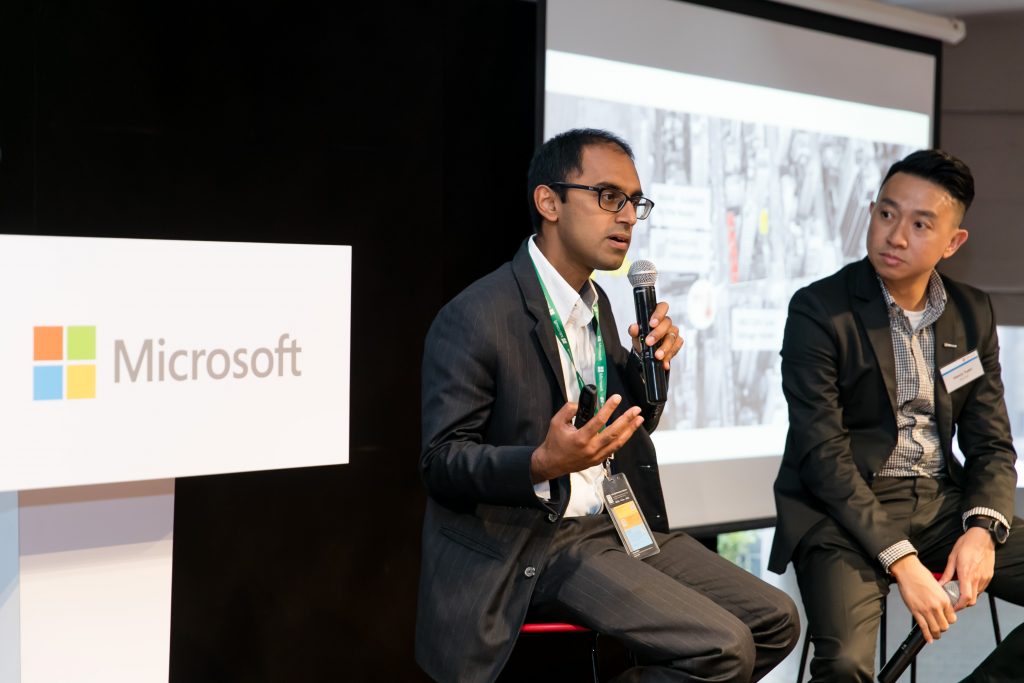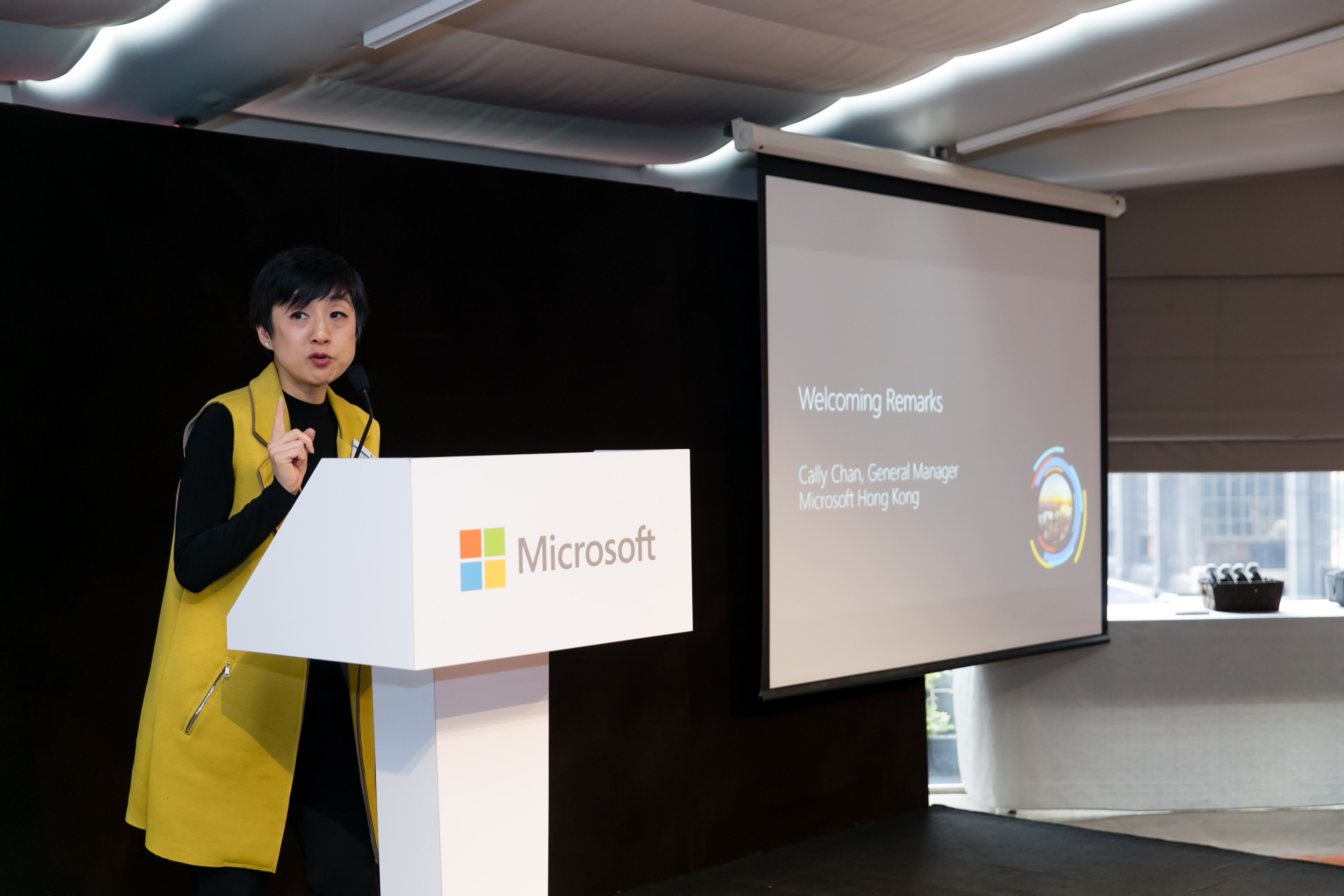In conjunction with Microsoft Tech Summit 2018, Microsoft Hong Kong hosted an Executive Luncheon as a side event on the event day. Attended by more than 70 senior executives from the major enterprises in Hong Kong, the luncheon aimed to cultivate conversations around digital transformation and AI, with the sharing of local success stories.
In the welcoming remarks, Cally Chan, General Manager of Microsoft Hong Kong presented the impact of digital transformation on GDP from regional and local perspectives.

Following the welcoming remarks, Fred Sheu, National Technology Officer of Microsoft Hong Kong set the scene by sharing Microsoft AI’s values and principles, and how AI accelerates digital transformation via the four main pillars namely: Engaging Customers, Empowering Employees, Optimizing Operations and Transforming Products.

A series of 3 fireside chats between Microsoft executives and thought-leaders was the highlight of the Executive Luncheon. Fred Sheu leaded the first fireside chat jointly with Ir Ted Suen, President of Hong Kong Computer Society, on how Hong Kong society as a whole is positively impacted by AI technology advancement; and specifically on how the use of Chatbot in public services help improve services and operations with insights.

In the second fireside chat Dr. Tan To Cheung, Division Chief, Hepatobiliary & Pancreatic Surgery of The University of Hong Kong, discussed with Kelvin Tse, Director, Public Sector Group of Microsoft Hong Kong around the ground breaking development of Machine Learning that calculates the best treatment option for liver cancer. Now with the aid of AI technology, patients’ overall survival time is lengthened significantly, which would not have been possible without applying advanced AI.

Together with Pubudu Abayasiri, Senior Manager, COE Analytics, Innovation of CLP, Henry Yuen, Director of FSI and Strategic Accounts of Microsoft Hong Kong shared an inspirational case of applying IoT data analytics for maintenance needs prediction, leading to cost and time saving while increasing the capability to support growing maintenance demands.





